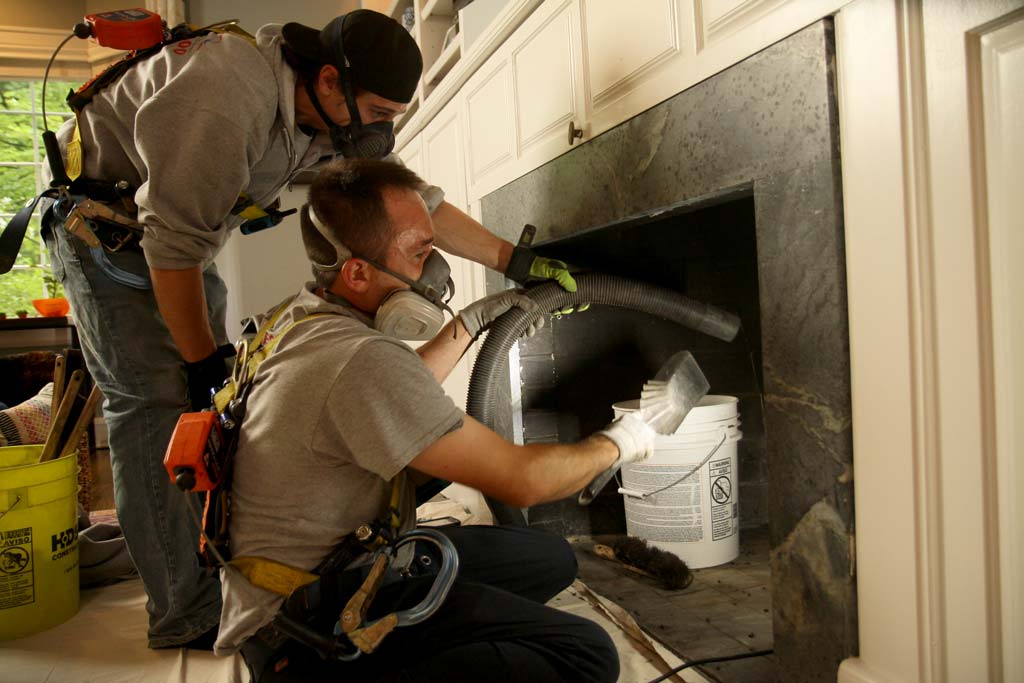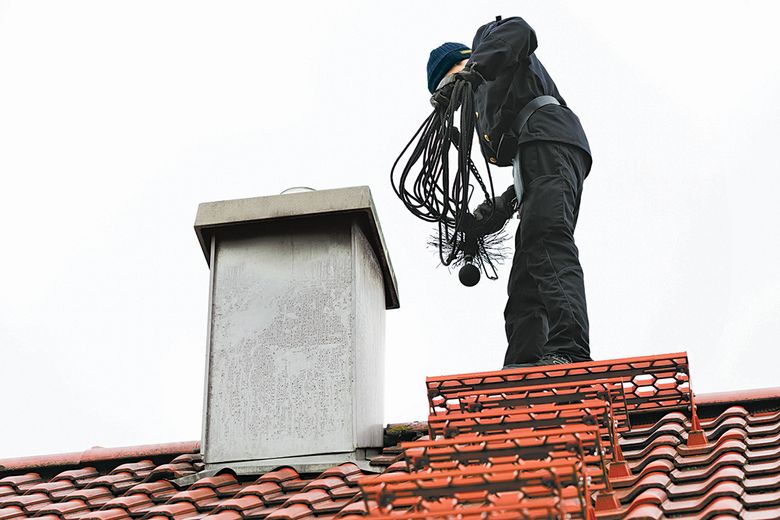Smokeshaft Maintenance with a Personal Touch: Chimney Clean San Jose Unleashed
Smokeshaft Maintenance with a Personal Touch: Chimney Clean San Jose Unleashed
Blog Article
Chimney Cleaning: A Step-by-Step Overview to Maintaining a Healthy And Balanced Fire Place
Keeping a healthy and balanced fireplace is important for the safety and security and performance of your home. Routine chimney cleansing is a crucial component of this upkeep routine. In this detailed guide, we will certainly provide you with comprehensive directions on exactly how to properly cleanse your smokeshaft, guaranteeing that it operates ideally and minimizes the danger of fire dangers. By complying with these standards, you will certainly discover how to gather the required tools, execute an aesthetic evaluation, clear debris and accumulation, sweep the smokeshaft, and complete the final actions for continuous upkeep. With a specialist strategy and interest to information, you can confidently care for your fire place and appreciate its warmth and convenience for years to find.
Collecting the Essential Tools
To begin the process of smokeshaft cleaning, the initial step is to collect all the necessary tools. Having the right devices available makes sure a secure and effective cleaning process. The important tools for smokeshaft cleaning consist of a smokeshaft brush, a ladder, decline towels or plastic sheets, a flashlight, gloves, and a dirt mask.
The chimney brush is the primary device utilized to eliminate residue and creosote buildup from the flue - Chimney Clean San Jose. It is vital to select a brush that matches the dimension and form of your smokeshaft.
A flashlight is necessary for examining the smokeshaft's inside for any kind of indicators of damage or obstructions. Gloves are essential to protect your hands from residue and other harmful compounds, while a dust mask aids avoid the breathing of debris.
Doing an Aesthetic Assessment

Using a flashlight, carefully examine the indoor wall surfaces of the smokeshaft for any type of signs of damages, such as cracks, loose blocks, or mortar wear and tear. These problems can jeopardize the smokeshaft's architectural integrity and pose a serious safety hazard. In addition, look for any type of signs of water damage, such as discoloration or efflorescence, as this can indicate a dripping chimney cap or blinking.
Following, examine the smokeshaft flue for any kind of obstructions. Try to find the visibility of nesting materials, leaves, or debris that might have accumulated in time (Chimney Clean San Jose). These blockages can limit airflow, enhance the threat of carbon monoxide build-up, and hinder the smokeshaft's capability to efficiently vent smoke
Throughout the visual assessment, pay very close attention to the smokeshaft crown, which is the top surface area that protects the chimney from wetness. Seek cracks or missing items in the crown, as these can permit water to get in the chimney and create significant damages.
Cleaning Debris and Build-up
After finishing the aesthetic inspection, the following action in smokeshaft cleansing entails clearing debris and accumulation to ensure the proper functioning of the fire place. With time, particles such as leaves, branches, and pet nests can gather in the smokeshaft, blocking the flow of air and causing prospective fire dangers. In addition, the buildup of creosote, a tar-like substance, is an usual issue in smokeshafts. Creosote is created when timber or nonrenewable fuel sources are melted, and if not removed frequently, it can lead to chimney fires.
To remove debris and build-up, it is necessary to use the right devices and techniques. A smokeshaft brush, especially made for this purpose, is made use of to get rid of loosened debris and creosote from the smokeshaft wall surfaces. It is important to select a brush that matches the dimension of your chimney to make sure reliable cleansing. Prior to beginning the cleaning process, make certain to cover the fireplace open up to stop particles from coming under the area.
To start, put the brush right into the chimney and relocate backwards and forwards, rubbing the walls to dislodge any particles or creosote. Utilize a sweeping movement to ensure extensive cleansing. It is suggested to begin with all-time low and work your method up. As soon as the cleaning is full, utilize a vacuum or a chimney brush expansion to get rid of the dislodged debris from the fire place.

Brushing Up the Chimney
The sweeping of the chimney is a vital action in preserving go now a healthy and balanced fire place. Gradually, soot, creosote, and other debris can accumulate in the smokeshaft, obstructing the circulation of air and possibly triggering a hazardous build-up of flammable materials. Routine chimney brushing up not just makes sure proper air flow however also avoids the danger of chimney fires.
When it comes to chimney sweeping, it is highly recommended to work with a specialist chimney sweep. These specialists have the understanding and devices necessary to safely and effectively eliminate the built up particles from your smokeshaft.
It is essential to keep in mind that the frequency of chimney sweeping depends upon numerous aspects, such as the sort of fuel utilized, the amount of use, and the sort of smokeshaft. As a general policy of thumb, it is advised to have your smokeshaft inspected and swept at least annually.
Final Actions and Maintenance
After finishing the chimney sweeping procedure, the initial step in the last maintenance is to evaluate the smokeshaft cap and spark arrestor. These components protect against particles, pets, and rainwater from going into the chimney.

Inspect the within the fire place for any kind of indications of damage, such as cracks, loosened blocks, or damaged mortar. These concerns can influence the architectural integrity and security of the fireplace. If any problems are spotted, seek advice from an expert chimney sweeper or mason to address them quickly.
Finally, take into consideration setting up carbon monoxide detectors near the fireplace and throughout your home. These tools can detect the existence of this harmful gas, giving a very early caution system in instance of a chimney breakdown. Routinely examine and replace the batteries in these detectors to ensure their effectiveness.
Conclusion
To conclude, complying with a detailed overview for chimney important link cleaning is important in keeping a healthy fireplace. By collecting the required tools, executing an aesthetic evaluation, clearing debris and accumulation, and brushing up the smokeshaft, house owners can ensure the security and effectiveness of their fireplace. Regular maintenance and cleaning will aid prevent chimney fires and enhance air top quality in the home. It is important to prioritize smokeshaft cleaning as a component of general home upkeep.
The crucial tools for chimney cleansing include a chimney brush, a ladder, drop fabrics or plastic sheets, a flashlight, handwear covers, and a dirt mask.
A smokeshaft brush, especially created for this function, is utilized to remove loose debris and creosote from the smokeshaft walls. Routine chimney sweeping not just ensures proper ventilation but also avoids the risk of chimney fires.
When it comes to chimney sweeping, it is highly suggested to work with a specialist chimney sweep. After completing the chimney sweeping process, the first step in the last websites maintenance is to examine the chimney cap and stimulate arrestor.
Report this page